The landscape around this town is prototypical of northeastern Ontario: a flat horizon dense with coniferous trees, broken here and there by a still, black lake.
But once you pull up to the gates of Detour Gold‘s (DGC-T) Detour Lake gold project, the tranquil landscape is consumed by a swarm of cranes, bulldozers, pick-ups and backhoes.
It’s the sort of industrial site one would expect if a company was building Canada’s biggest gold mine – and in fact, that is just what Detour is doing.
Once the rebar and poured concrete takes shape, Detour will have erected a facility equipped to process 55,000 tonnes of ore a day, with a ramp-up to 61,000 tonnes planned after four years. Gold production is set for the beginning of 2012, and will average 650,000 oz. gold per year at a cash cost of US$437 per oz. gold.
But Detour’s president and chief executive Gerald Panneton anticipates even larger numbers.
The buzz around camp during the tour is that a gold price over US$1,000 per oz. would have Detour milling ore at a lower cut-off grade than laid-out in the feasibility study.
That study considered a 0.5-gram cut-off, but Detour instead constructed a mill capable of handling a 0.34-gram gold per tonne cut-off.
Panneton says the 0.5-gram figure was used with an eye towards maximizing revenue and generating a quicker payback period. But with gold prices sitting at today’s much loftier heights, the company can add 3 million oz. to its resources by simply dropping the cut-off grade.
“This is our new reserve in 2012, with US$1,000 per ounce of gold,” Panneton says. “By January next year, we can be at 18 to 20 million ounces of resources without changing the pit size.”
Lower-grade ore would also make mining more efficient. It would reduce the mine’s project strip ratio to 2.2-to-1 from 3-to-1, and wouldn’t sacrifice much of the average grade outlined in the current cut-off. The company says a lower cut-off grade would put the average grade at 0.82 gram gold.
The project boasts proven and probable reserves of 449.5 million tonnes grading 1.03 grams gold for 14.86 million oz. gold.
With such large reserves already outlined and much more likely on the way, it is little wonder that CIBC’s mining analyst Barry Copper wrote that Detour will not only be the largest gold producer in Canada, but could become the country’s biggest of all-time.
As for other exploration targets on the company’s sprawling 500-sq.-km land package, Panneton is cool to the idea of spending too many dollars on exploration drilling in the near term, when so many ounces can be gained by optimizing a pre-existing pit.
“What’s the point of doing exploration unless you’ve already delivered on what you said you were going to do?” he asks rhetorically, before emphasizing that the first phase of the $1.3-billion mine construction is on time and on budget.
Placer and Pelangio
While Detour is set to move more earth than has ever been moved at the site, it is not the first company to mine here.
The former Placer Dome ran an open-pit operation back in the 1990s – the water-filled remnants of which can still be seen on the eastern flank of the pit outline.
But Placer had only limited success here because, Panneton says, it didn’t understand the nature of the deposit.
“It’s a low-grade deposit,” he says, “so whoever tried to mine high-grade had problems. It’s easier to mine it as a low-grade deposit.”
Detour’s ties to the project began with Pelangio Mines, which started talking with Placer Dome in 1998 after Placer closed the mine because head grades weren’t good enough for underground mining.
Gold was below US$300 per oz. and Pelangio bought the project for just $1.5 million – money it borrowed from Franco-Nevada (FNV-T) for repayment in royalties and exploration expenditures.
The company found a way to keep it together and retain the project between the lean years of 1998 and 2002, when the gold-mining business was out of fashion.
Then the world turned, the commodities secular bull run began and Pelangio got to work re-envisioning the deposit.
The idea that the site hosted a small open pit with an untapped underground mine was reversed. Pelangio believed the best way to mine it was by massive open pit.
But the new vision brought new obstacles, and the company lacked the capital and expertise to fully embark on the project.
So Pelangio connected with the Hunter Dickinson Group, or more precisely, with Gerald Panneton, Detour’s current chief executive.
Panneton built his reputation as a late-stage exploration specialist for Barrick Gold (ABX-T, ABX-N), and he quickly confirmed that Detour Lake had the potential to yield far more than the 1.7 million oz. from the resource estimate.
In 2006, Panneton recalculated a resource using previously drilled core interpreted with a new model. The endeavour proved a success when the updated estimate bolstered resources to 2.03 million oz. gold.
Panneton was on the right path, and soon Detour Lake would be on the fast track towards becoming a mine once more.
A year after the resource update, Pelangio sold the deposit to Detour Gold for $5 million in cash and 20 million shares – which represented a 50% interest in Detour – at a time shares were worth $3.50.
That converted the initial $1.5-million investment to $75 million – a tidy return for a project that Placer had all but thrown onto the scrap heap.
Still room to explore
And while Panneton focuses on building a mine and optimizing the current pit, that doesn’t mean he doubts the area’s longer-term exploration potential.
“We control five hundred and fifty kilometres of greenstone belt,” he says. “It’s like having the land between Val-d’Or and Noranda. So we don’t need to buy anything because we can find gold on our own ground.”
And should the region bear more fruit than the current deposit, Detour will have little trouble making the gold extraction economic.
“We think and we hope it’s like the Abitibi – a big mine and then small ones around it,” Panneton says. “Anything we find within thirty kilometres of the mill is economic, so the first step was to build the mill, and the next step is to find every freaking bit of gold within thirty kilometres.”
In the nearer term, however, Detour is quite content to march along the deposit’s western extension, which remains open in that direction.
The lower cut-off grade isn’t the only route to more ounces at the project. Placer discovered what is known as the QK zone farther to the west, where it plunges to deeper depths than those of the current reserves.
Detour is currently looking at the Placer’s QK core, which returned high-grade intercepts of over 4 grams gold per tonne. Placer calculated a resource estimate on the zone which outlined 200,000 oz. gold at an average grade of 6 grams per tonne.
QK’s depth and grade mean the zone will likely be mined by underground methods.
Getting into the infrastructure
Power is a central issue when building any mine, but when it’s on the scale of Detour Lake, it becomes even more essential.
The trick has been to ensure a stable power supply that could accommodate additional power needs should the facility expand – and get it all at a reasonable price.
Fortunately for Detour, the answer lay 135 km west of the mine site, in the form of the Island Falls hydroelectric plant.
All that was left for Detour to do was connect to the grid, an action that Panneton says will save $6 million per year, versus generating its own power on-site.
To unlock such savings, however, Detour had to erect power lines at a pace of 10 km per week for 14 weeks, with the line finally arriving at the mine in early September.
The cost for power will come in at 3¢ per kilowatt hour at night and 8¢ during the day,
for an average 5¢ per kilowatt hour.
The plant will draw 10 megawatts of power, and energy costs are slated to make up 12% of the plants operating costs. That is a low number, considering power at many plants can account for 30 to 40% of operating expenses.
Beyond power costs, the company expects that the housing, feeding and transportation of workers from Cochrane will cost $235 per oz. gold produced.
When all costs are taken into account, Panneton says Detour Lake will end up with a very enviable US$625-per-oz.-gold. breakeven price.
One big pit
Flying by helicopter over the site gives the best sense of the future mine’s scope.
Placer’s old pit is now a small lake, but from the air it looks like little more than a pond next to the massive swath of cleared land to the west, which is set to host a 3-km-long, 1-km-wide and 650-metre-deep open pit.
Handling all the ore that comes out of the ground will be a 10-story crusher – which will make it the largest in Canada – with the capacity to crush 100,000 tonnes of rock per day.
But the crusher won’t be the only structure of magnitude on the site. The leach tanks will join those already operating at Osisko Mining‘s (OSK-T) recently commissioned Canadian Malartic mine, which is the largest anywhere in Canada as well.
While the tanks’ size equals Malartic’s, Panneton explains that the joints of the tanks are bolted instead of welded.
He says this is an example of how Detour Lake has benefited from Osisko going first on building Canada’s next large-scale gold mine, because the bolts seek to address leaking issues that Panneton says were encountered at Malartic.
For its part, Osisko says it has had to do equipment modifications and repairs that are normal in commissioning a new mine.
Another strategy to minimize hassles in the construction process is the “wraparound” technique of building two independent, side-by-side milling systems.
The idea is to build one of the lines first, and construct the second line while the first is running. The strategy ensures the quickest route to producing gold and lets the second line benefit from tweaks and adjustments made to the first.
As for variability in the hardness of the rock – which can cause headaches for new mines when too many soft rocks make what miners call a “cake” in the semi-autogenous grinding (SAG) mill – Panneton says Detour will be able to avoid the problem, because the mine is 75% hard rock.
Dealing with ore variability will also be helped along by adding a secondary crusher – a move connected to Canadian Malartic.
Osisko announced it will add a pre-crush circuit so that it can increase throughput expansion to over 60,000 tonnes per day. It plans to install the units by early next year at a cost of $32 million.
Detour’s decision to include a secondary crusher increases the SAG mill’s efficiency by 20% to 30%, and will help ensure the milling circuit is robust enough to deal with varying rock hardness – meaning Detour won’t have to do any blending.
With the giant open pit making mining relatively straightforward, and much of the operational issues at the future plant taken into account by the Detour team, the only thing left is paying for it all.
In August, Detour announced that it had that front covered. It also announced completion of a bought-deal financing that raised $428 million, and a financing deal with Caterpillar Financial Services for $40 million. The deal with Caterpillar’s (CAT-N) financing arm comes on top of the $105 million the company already lent Detour for purchasing its mobile mining fleet.
Detour’s ability to raise such funds without much fuss shows just how strong its investors’ faith is that the name Detour Lake will soon be added to the long list of legendary Canadian gold mines.

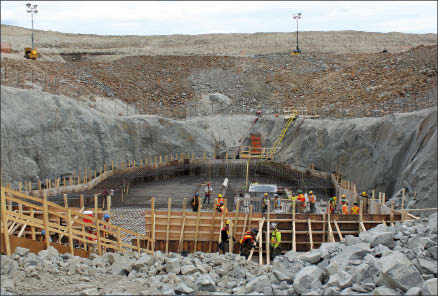
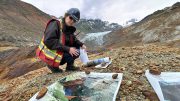
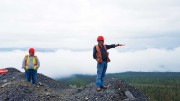
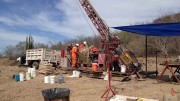
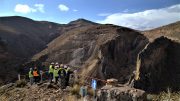
Be the first to comment on "Detour set to make Canadian gold mining history"